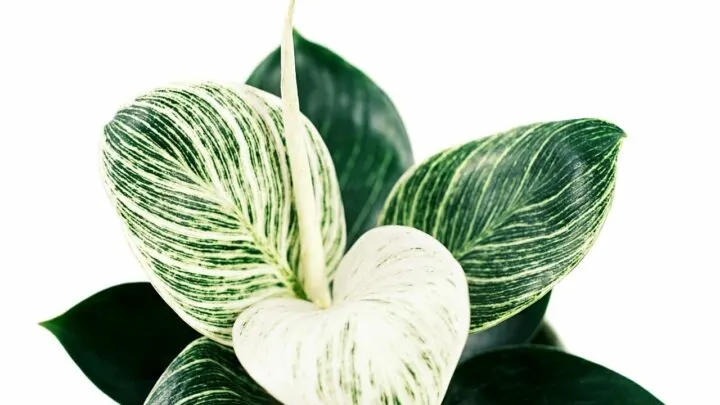How Rare is Philodendron birkin? Philodendron birkin plants have become very popular as houseplants.
While Philodendron birkins are native to humid, tropical climates, they are considered ideal indoor plants — even if you live in an apartment.
Suppose you are fortunate enough to own a Philodendron birkin plant or are considering purchasing one but have discovered that they are not very easy to find. In that case, you may wonder exactly how rare this beautiful plant is.
Table of Contents
How Rare is Philodendron birkin?
Once rare, Philodendron birkin has become commonly available from garden centers to big box stores. Whereas the price of a Philodendron birkin was once three digits you now find these plants priced between $20-$50. The plant originally developed as a result of a rare and spontaneous gene mutation. Philodendron birkin is a specifically cultivated designer plant that does not grow naturally in the wild.
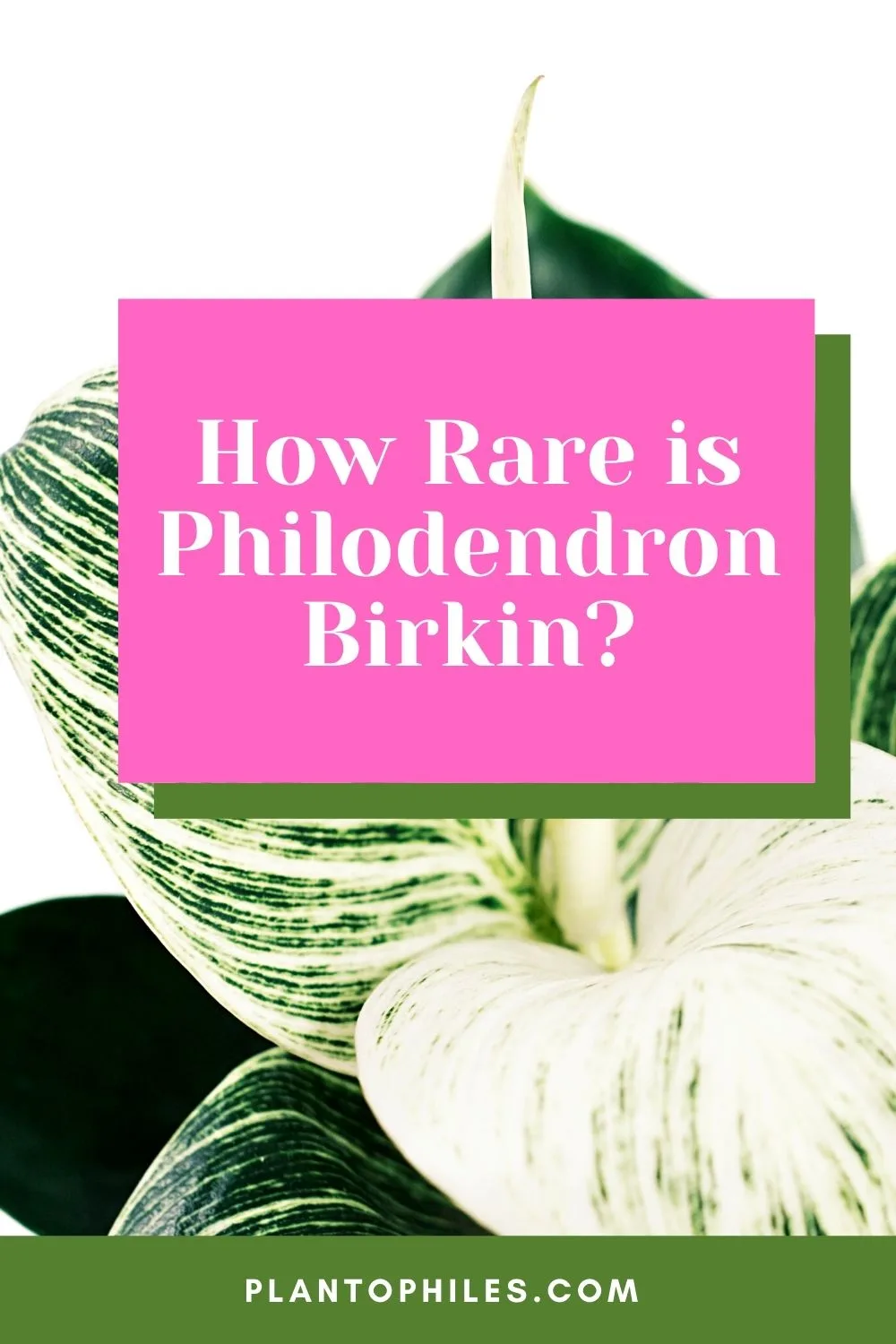
The rarity of Philodendron Birkin
Since Philodendron birkin plants were originally expensive and hard to find, some have compared them to designer handbags.
Thanks to their increasing popularity, they continue to be cultivated and are not as rare and costly as they once were.
Philodendron birkin Plants Originally Developed from a Rare Gene Mutation
Philodendron plants were originally discovered in Brazil way back in the 1600s. There are over 450 species of philodendrons, and many have become popular as houseplants.
However, the Philodendron birkin is a relatively new species with an interesting history.
Philodendron birkin doesn’t grow naturally in the wilderness as the plant came to be due to a rare, spontaneous gene mutation that occurred in the Rojo Congo Philodendron.
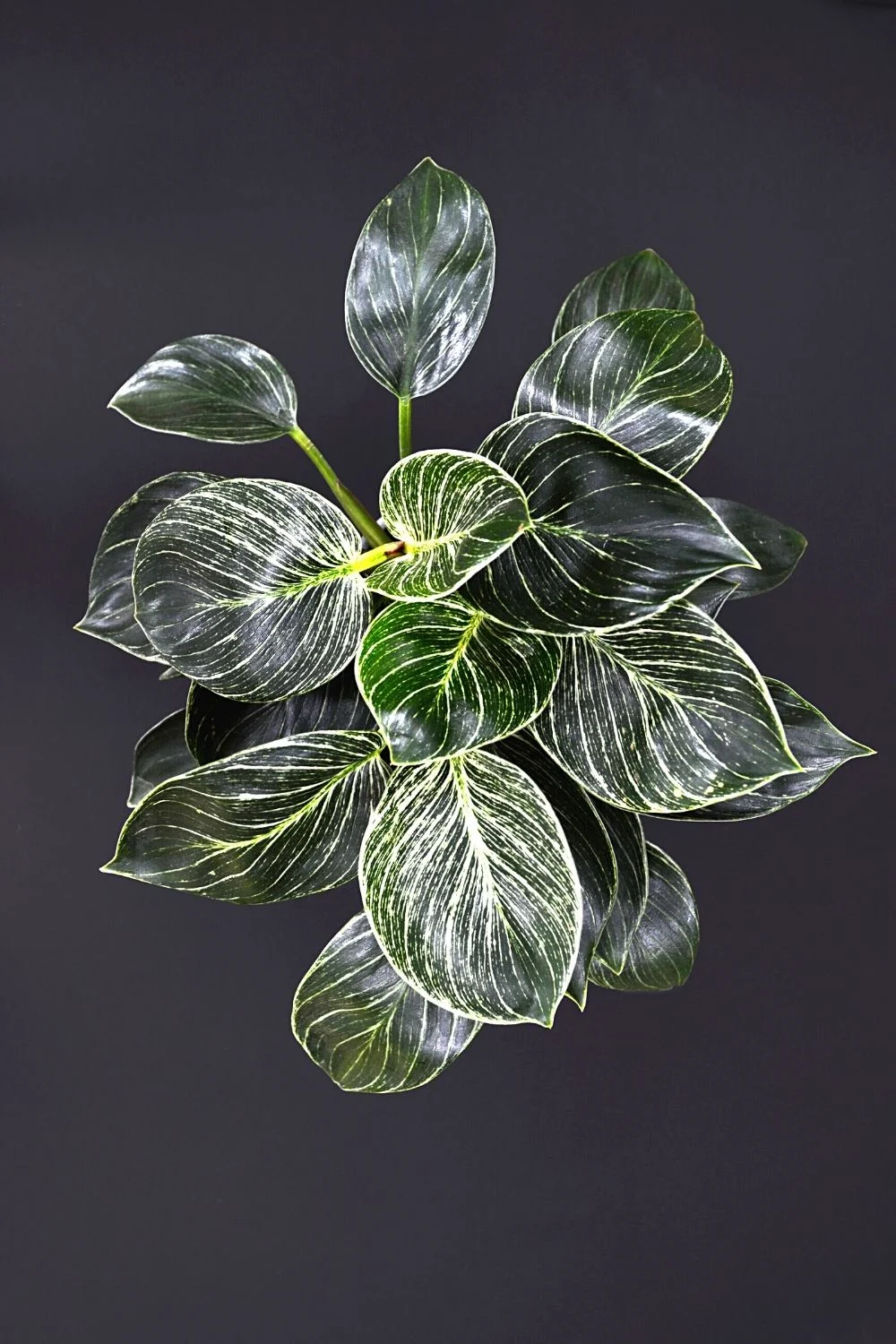
All of the plant’s cells replicated the mutation, then the mutated leaves separated from the plant and began to propagate, resulting in the beautiful and rare Philodendron birkin.
While Philodendron birkin may continue to mutate, this variegated plant has maintained its signature dark green coloring highlighted by white stripes with few exceptions.
Philodendron birkin is Cultivated in Greenhouses
Although there are over 480 species of philodendrons, many of which grow naturally in South America, Philodendron birkin is a designer plant, which means that it can’t be found in the wilderness.
You will never see it growing naturally — even if you travel to Florida or Brazil.
Instead of naturally growing from seed as most plants do, Philodendron birkin is specially cultivated using tissue cultures derived from the plant.

Philodendron birkin can be propagated from stem cuttings.
It’s relatively easy to propagate Philodendron birkin, and many gardeners have chosen to do so.
If you know how to propagate Philodendron birkin yourself, growing more of these plants on your own makes sense.
Since many gardeners have figured out how to propagate Philodendron birkin and may even be inclined to sell some of the plants they’ve grown, Philodendron birkin is slowly becoming less rare and increasingly available.
Philodendron birkin was Initially Expensive and Hard to Find
When Philodendron birkin first developed, these plants were extremely hard to find in stores and insanely expensive due to the simple concept of supply and demand.
While they still aren’t nearly as common as, say, Gardenias, they aren’t nearly as rare as they once were.
Of course, plant enthusiasts were initially amazed and bewildered when Philodendron birkin initially developed from a rare gene mutation.
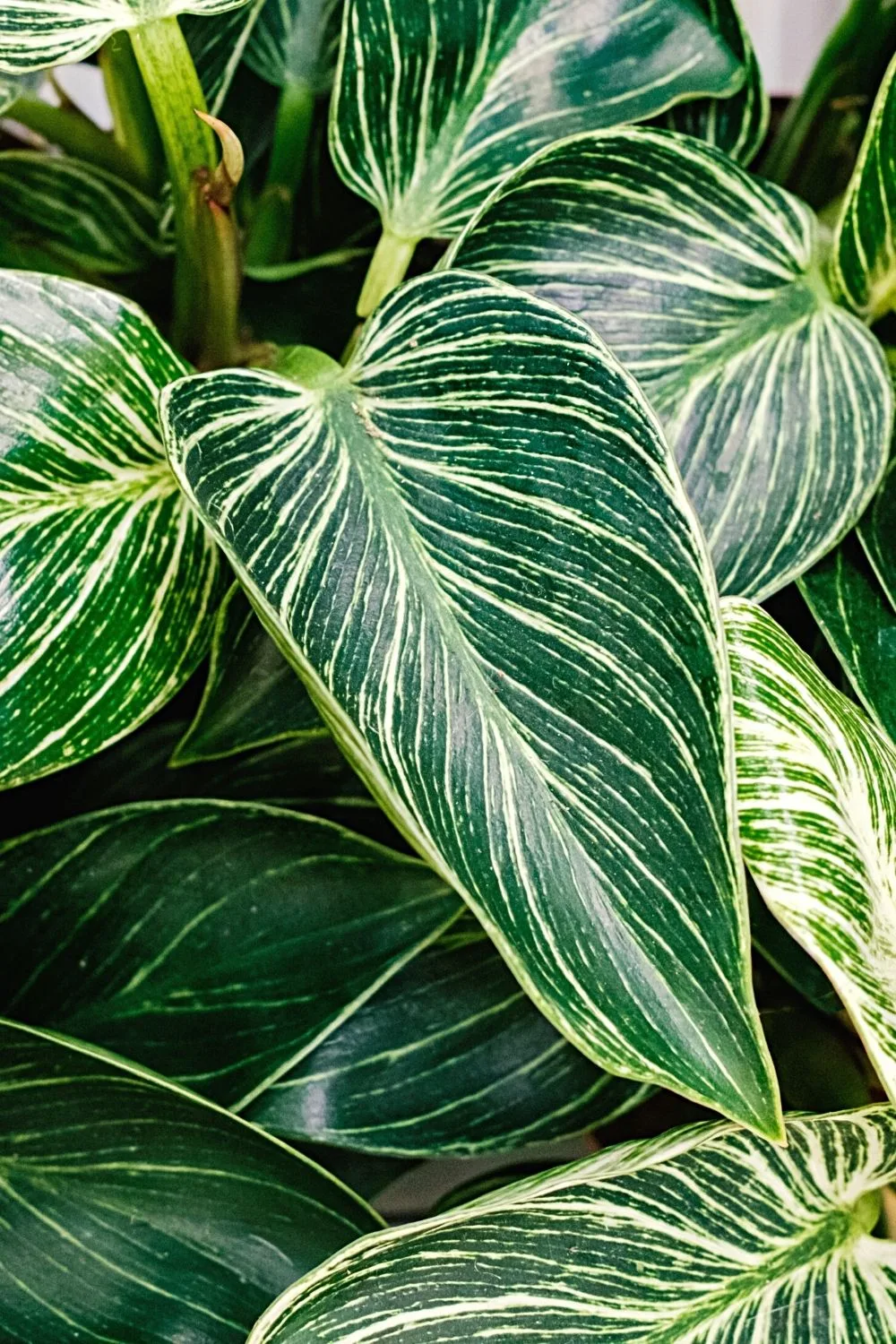
A gorgeous philodendron variation had developed, and they were determined to replicate it.
They eventually did so with tissue culture (TC), but this wasn’t a simple process, which makes the originally high cost of this plant perfectly understandable.
You can now buy these beautiful houseplants for as little as $20 to $50 each.
This is still much more expensive than buying seed packets of your favorite seasonal flowers or a single fully-grown begonia. Still, the cost of Philodendron birkin is comparable to that of many popular houseplants.
You can find a full Philodendron birkin care guide here.
Philodendron birkin has Become a Popular Houseplant
The popularity of Philodendron birkin has contributed to its increased availability and affordable price.
Once people saw the striking green leaves, accented with white pinstripes, they had to have this plant.
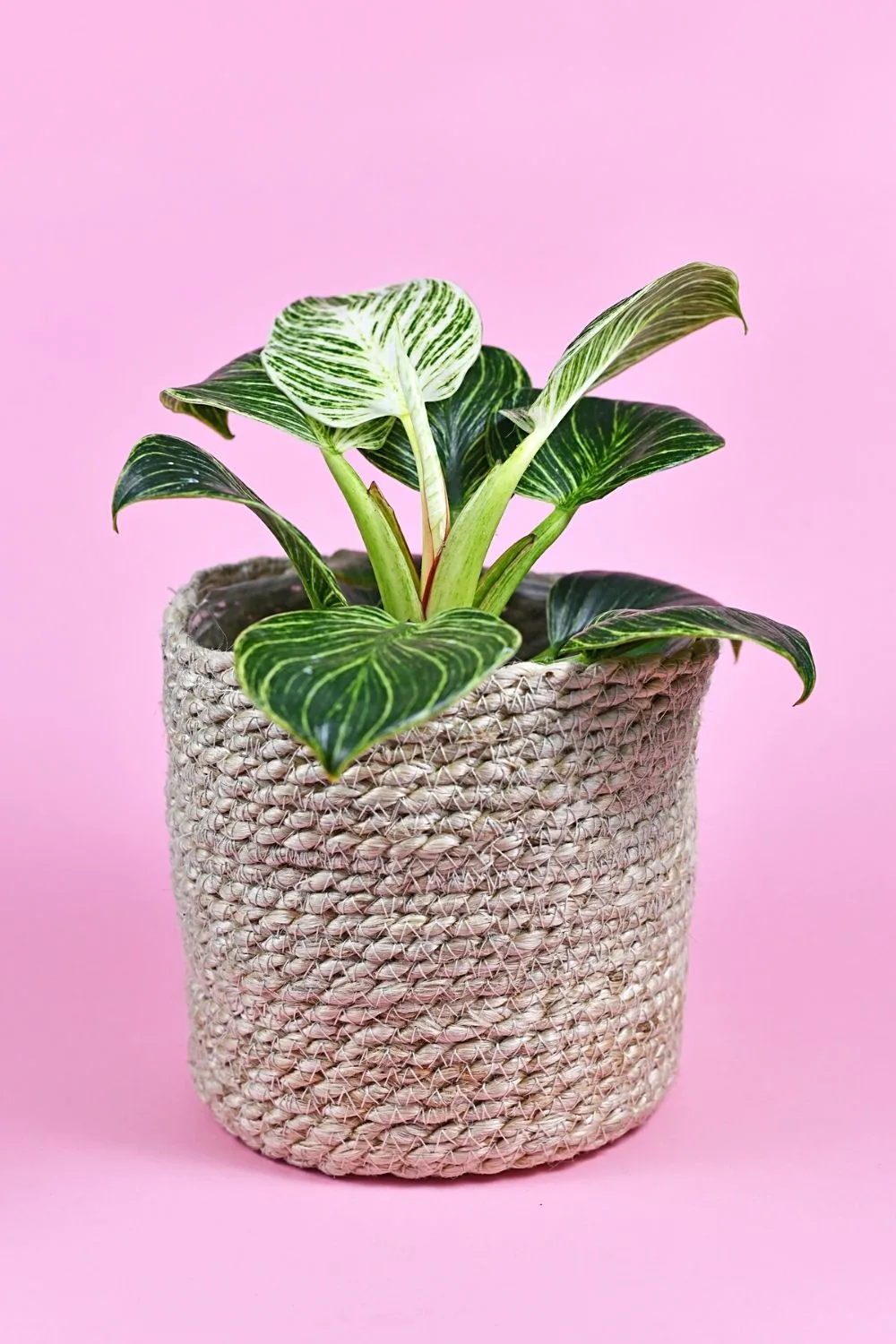
Lucky owners of Philodendron birkin plants likely received many compliments as to the beauty of their plants.
People loved Philodendron birkin and wanted one of these plants in their own homes or offices, so the plants continued to be propagated and sold.
While Philodendron birkin still isn’t very common, it’s much easier to find and afford than when it was first discovered.
Finally, Philodendron birkin is a plant that’s for everyone.
Frequently Asked Questions about How Rare Philodendron birkin is
What is a Philodendron birkin?
Philodendron birkin plants are rare tropical plants with large dark green leaves with white pinstripes. They grow to approximately three feet tall and are relatively easy to care for.
Is Philodendron birkin rare?
Although Philodendron birkins are still relatively rare, they are strikingly beautiful houseplants that are easy to care for and wonderful additions for plant collectors to add to their homes.
Is Philodendron birkin poisonous?
Philodendron birkin is a poisonous plant, but it’s only toxic if the leaves are chewed on. That said, these plants aren’t a good choice for people who have pets or children.
Afterword: How Rare is Philodendron birkin?
Since Philodendron birkin developed due to a rare gene mutation and didn’t grow naturally in the wild, it goes without saying that it is a rare plant.
However, its popularity has led to its continued cultivation, which has made it less rare and expensive than it originally was.
While you may still encounter difficulty finding Philodendron birkin available for purchase, it is occasionally in stock at nurseries and retailers.
Fortunately, it’s become increasingly possible to own and enjoy the beauty of this amazing plant.

Daniel has been a plant enthusiast for over 20 years. He owns hundreds of houseplants and prepares for the chili growing seasons yearly with great anticipation. His favorite plants are plant species in the Araceae family, such as Monstera, Philodendron, and Anthurium. He also loves gardening and is growing hot peppers, tomatoes, and many more vegetables.

